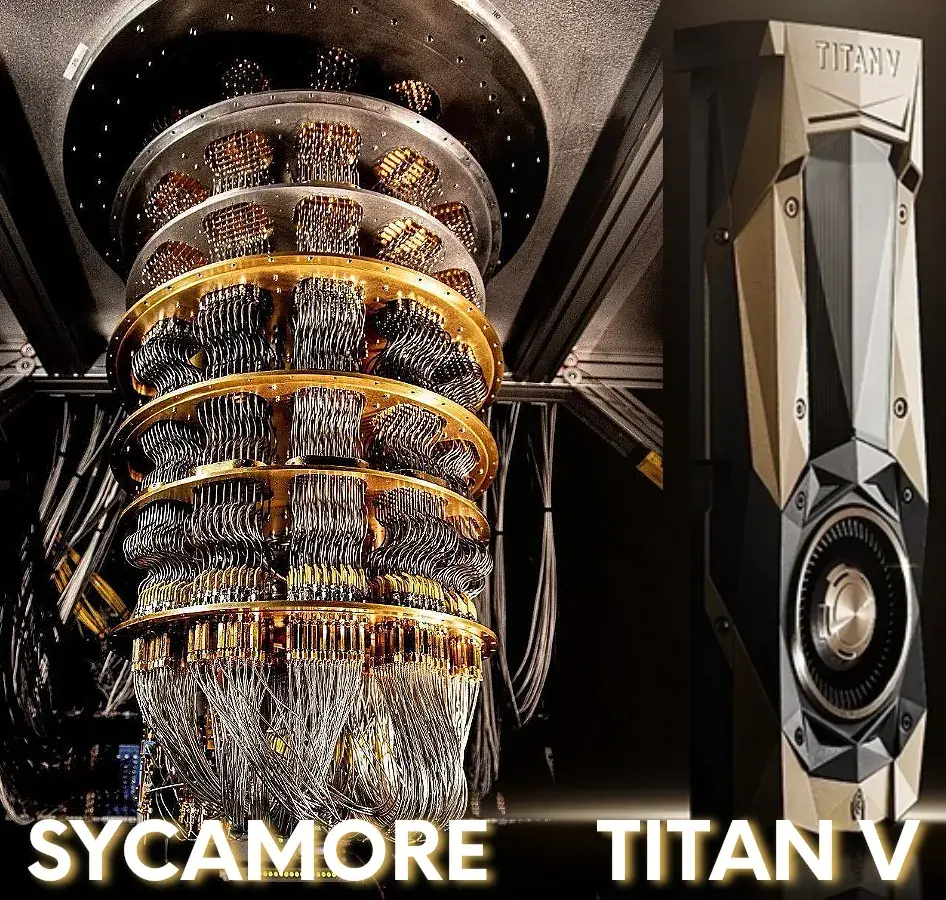by Jeremy Dixon
.png/:/cr=t:0%25,l:0%25,w:100%25,h:100%25/rs=w:1280)
I was sitting in my office, reading the latest news about artificial intelligence, when I saw a headline that made my jaw drop: Google’s new quantum computer prototype named Sycamore has processed in six seconds what Frontier the current leader of super computers would take 47 years to process.
I’ve been following the development of quantum computing for a few years now, and I’ve seen firsthand how powerful these machines can be. But Sycamore is on a whole different level. It’s the first quantum computer to achieve quantum supremacy, which means that it has performed a task that is impossible for any classical computer.
In this case, Sycamore was able to simulate a random circuit of 53 qubits. This is a feat that would have taken Frontier, the world’s most powerful supercomputer, 47 years to complete.
The implications of Sycamore’s achievement are profound. It means that quantum computers are now capable of solving problems that were previously thought to be impossible. This could lead to major breakthroughs in fields such as artificial intelligence, materials science, and drug discovery.
Of course, there are still many challenges that need to be overcome before quantum computers become widely available. But Sycamore’s achievement is a major step forward, and it’s clear that we are on the cusp of a quantum revolution.
The Titan V: A Powerful GPU for AI Research
Well, this and a phone call from home complaining about lagging on our home network led me to wonder what is new in the world of graphics cards. I’ve been following the development of AI for a few years now, and I’ve seen firsthand how powerful these machines can be. But the Titan V is on a whole different level. It contains 21.1 billion transistors, and delivers 110 teraflops of horsepower, 9 times that of any other Nvidia processor. For perspective, the Xbox One X delivers only six teraflops, and that was really impressive when it was announced earlier this year.
The Titan V is so powerful that it could be used to train AI models that are simply impossible to train on any other hardware. This could lead to major breakthroughs in AI research and could even change the way we live our lives.
For example, the Titan V could be used to develop new medical AIs that are better at diagnosing diseases than human doctors. It could also be used to create new self-driving cars that are safer and more efficient than anything we have today.
Of course, there are also some potential downsides to the Titan V. For one thing, it’s incredibly expensive. The Titan V costs $2500, which is more than most people can afford. Additionally, the Titan V is so powerful that it requires a lot of cooling, which can make it difficult to use in some settings.
.png/:/cr=t:0%25,l:0%25,w:100%25,h:100%25/rs=w:1280)
How the Titan V and Sycamore Work Together
The Titan V and Sycamore are two very different machines, but they can work together to achieve amazing things. The Titan V can be used to train AI models that are incredibly complex, and Sycamore can be used to run these models on real-world data. This means that we can now use AI to solve problems that were previously thought to be impossible.
For example, we could use the Titan V and Sycamore to develop new drugs that are more effective and have fewer side effects. We could also use them to create new materials that are stronger and more lightweight. The possibilities are endless.
The Future of Quantum Computing and AI
The development of the Titan V and Sycamore is a major milestone in the development of quantum computing and AI. These machines are just the beginning, and I believe that we will see even more amazing things in the years to come.
I’m excited to see what the future holds for quantum computing and AI. I believe that these technologies have the potential to change the world, and I can’t wait to see what people do with them.
Despite these drawbacks, I believe that the Titan V is a major step forward for AI research. It has the potential to revolutionize the way we live our lives, and I’m excited to see what the future holds for this incredible technology.
Here are some examples of how the Titan V could be used in AI research:
- Natural language processing: The Titan V could be used to train AI models that are better at understanding and generating natural language. This could lead to new breakthroughs in machine translation, speech recognition, and text summarization.
- Computer vision: The Titan V could be used to train AI models that are better at understanding and processing visual data. This could lead to new breakthroughs in image recognition, object detection, and facial recognition.
- Machine learning: The Titan V could be used to train AI models that are better at learning from data. This could lead to new breakthroughs in fraud detection, predictive analytics, and personalized recommendations.
I’m excited to see what the future holds for AI research, and I’m grateful to Nvidia for making the Titan V a reality. This GPU has the potential to change the world, and I can’t wait to see what people do with it!




